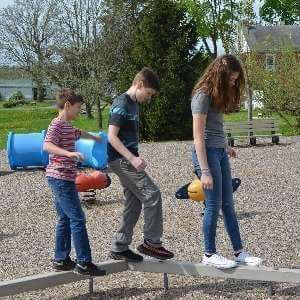We all stim. In fact, our solitary leisure activities (such as shooting a basketball into a hoop for a few minutes, playing the violin, or watching reality TV) are actually stimming. These self-stimulatory behaviors keep the neurons in our brain firing while we are not meaningfully engaged with others or working on a task where we need to concentrate.
Since children with autism usually have poor language, social, and leisure skills, some kids with autism engage in stim behavior for hours each day and these stim behaviors are often very disruptive across a variety of settings.
Stimming can take very different forms. Some kids might engage in stimming by rocking their bodies, flapping their fingers or by making loud vocalizations while kids with higher language abilities might script lines from movies, build the same lego structures over and over, or watch the same YouTube clips for hours.
Some stims, such as head banging or eye-poking, can be dangerous or even life-threatening. I started with a 2-year-old client several years ago that banged his head repetitively on hard surfaces for 3 or more hours per day which caused an open wound on his head. With proper ABA/VB intervention and with regular supervision and oversight by me as the BCBA, we were able to get this young boy’s headbanging down to under 5 minutes a day and his head wound eventually healed.
Want my Six Steps to Reduce Minor Self-Stim Behavior in Children with Autism cheatsheet? Click here.
As both a BCBA-D and a mom of a son with autism, you might be surprised to learn that unless a stim behavior is dangerous, like the 2-year-old client’s headbanging described above, I almost never work on decreasing minor stim behavior directly. Instead of focusing on decreasing the stimming (rocking, moaning, scripting, etc.), I work on improving language and learning skills and eventually replacing very odd and immature stim behaviors with more socially appropriate leisure activities.
The key to stopping a stim behavior is recognizing that you cannot, in fact, simply STOP a behavior. Any behavior that is to be reduced must be replaced by an equally valuable or functional behavior.
If you’re looking for even more information on stopping stimming your child or client with autism, check out my podcast episode on How to Reduce Self-Stimulatory Behavior.







